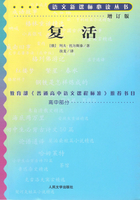The dimensions of the Cosmos are so large that using familiar units of distance, such as meters or miles, chosen for their utility on Earth, would make little sense. Instead, we measure distance with the speed of light. In one second a beam of light travels! 86,000 miles, nearly 300,000 kilometers or seven times around the Earth. In eight minutes it will travel from the Sun to the Earth. We can say the Sun is eight light-minutes away. In a year,it crosses nearly ten trillion kilometers, about six trillion miles, of intervening space. That unit of length, the distance light goes in a year, is called a light-year. It measures not time but distances - enormous distances.
The Earth is a place. It is by no means the only place, it is not even a typical place. No planet or star or galaxy can be typical, because the Cosmos is mostly empty. The only typical place is within the vast, cold, universal vacuum, the everlasting night of intergalactic space, a place so strange and desolate that, by comparison, planets and stars and galaxies seem achingly rare and lovely. If we were randomly inserted into the Cosmos, the chance that we would find ourselves on or near a planet would be less than one in a billion trillion trillion (1033, a one followed by 33 zeroes). In everyday life such odds are called compelling. Worlds are precious.
From an intergalactic vantage point we would see, strewn like sea froth on the waves of space, innumerable faint, wispy tendrils of light. These are the galaxies. Some are solitary wanderers; most inhabit communal clusters, huddling together, drifting endlessly in the great cosmic dark. Before us is the Cosmos on the grandest scale we know. We are in the realm of the nebulae, eight billion light-years from Earth, halfway to the edge of the known universe.
A galaxy is composed of gas and dust and stars billions upon billions of stars. Every star may be a sun to someone. Within a galaxy are stars and worlds and, it may be, a proliferation of Iiving things and intelligent beings and spacefaring civilizations. But from afar, a galaxy reminds me more of a collection of lovely found objects - seashells, perhaps, or corals, the productions of Nature laboring for aeons in the cosmic ocean.
There are some hundred billion (1011) galaxies, each with, on theaverage, a hundred billion stars. In all the galaxies, there are perhaps as many planets as stars, 1011×1011=1022, ten billion trillion. In the face of such overpowering numbers, what is the likelihood that only one ordinary star, the Sun, is accompanied by an inhabited planet? Why should we, tucked away in some forgotten corner of the Cosmos, be so fortunate? To me, it seems far more likely that the universe is brimming over with life. But we humans do not yet know. We are just beginning our explorations. From eight billion light-years away we are hard pressed to find even the cluster in which our Milky Way Galaxy is embedded, much less the Sun or the Earth. The only planet we are sure is inhabited is a tiny speck of rock and metal, shining feebly by reflected sunlight, and at this distance utterly lost.
But presently our journey takes us to what astronomers on Earth like to call the Local Group of galaxies. Several million light-years across, it is composed of some twenty constituent galaxies. It is a sparse and cbscure and unpretentious cluster. One of these galaxies is M31, seen from the Earth in the constellation Andromeda. Like other spiral galaxies, it is a huge pinwheel of stars, gas and dust. M31 has two small satellite, dwarf elliptical galaxies bound to it by gravity, by the identical law of physics thattends to keep me in my chair. The laws of nature are the same throughout the Cosmos. We are now two million light-years from home.
Beyond M31 is another, very similar galaxy, our own, its spiral armsturning slnwly, once every quarter billion years. Now, forty thousand light- years from home. we find ourselves falling toward the massive center of the Milky Way. But if we wish to find the Earth, we must redirect our course to the remote outskirts of the Galaxy, to an obscure locale near the edge of a distant spiral arm.
Our overwhelming impression, even between the spiral arms, is of stars streaming by us a vast array of exquisitely self-luminous stars, some as flimsy as a soap bubble and so large that they could contain ten thousand Suns or a trillion Earths; others the size of a small town and a hundred trillion times denser than lead. Some stars are solitary, like the Sun. Most have companions. Systems are commonly double, two stars orbiting one another. But there is a continuous gradation from triple systems through loose clusters of a few dozen stars to the great globular clusters, resplendent with a million suns. Some double stars are so close that they touch, and starstuff flows beneath them. Most are as separated as Jupiter is from the Sun. Some stars, the supernovae, are as bright as the entire galaxy that contains them; others, the black holes, are invisible from a few kilometers away. Some shine with a constant brightness; others flicker uncertainly or blink with an unfaltering rhythm. Some rotate in stately elegance; others spin so feverishly that they distort themselves to oblateness. Most shine mainly in visible and infrared light; others are also brilliant sources of X-rays or radio waves. Blue stars are hot and young, yellow stars, conventional and middle-aged; red stars, often elderly and dying; and small white or black stars are in the final throes of death. The Milky Way contains some 400 billion stars of all sorts moving with a complex and orderly grace. Of all the stars, the inhabitants of Earth know close-up, so far, but one.














